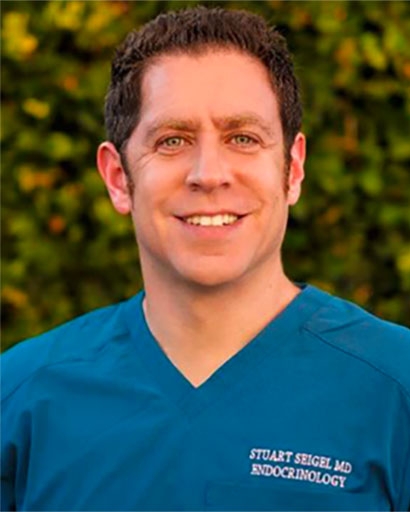What is neck ultrasound?
Neck ultrasound, also called sonography or diagnostic medical sonography, is a way to see inside the body, and diagnose conditions and diseases. It uses high-frequency sound waves (ultrasound) to produce images of the inside of your body. Most ultrasound scans use a device or probe that’s shaped like a microphone. The probe is passed over your skin, the transducer sends out the ultrasound waves, and then records the echoes. The echoes are converted into detailed images that appear immediately on a monitor.
What can a neck ultrasound show?
The quality of the ultrasound depends on the skill of the person (examiner) performing it, as well as the skill of the person evaluating the images. An experienced examiner can provide images that can be used to look for problems such as cysts, tumors or abnormal lymph nodes. An ultrasound can also produce images of endocrine glands, muscles, tendons, ligaments, nerves and joints. It can erect infections, abscesses, or inflammation and damage due to trauma.
What else can ultrasounds be used for?
Ultrasounds can be used to diagnose arthritis, gallbladder disease, muscle and skeleton problems, sprains, trapped nerves, and evaluate blood flow. In pregnant women, it can be used to monitor the baby’s development and health, and view the uterus and ovaries.
Ultrasound can be used to guide biopsies. An ultrasound-guided biopsy can be a difficult procedure, which should only be performed by a skilled practitioner.
Ultrasound has been used by physical therapists for many years to reduce pain and inflammation, and to improve circulation. It may also help speed recovery of sprained ligaments, torn muscles and fractured bones.
Is neck ultrasound safe?
Yes, it is non-invasive and most scans are done outside your body. Unlike other imaging methods (X-rays or CT scans), you have no exposure to radiation and there are no adverse effects. Ultrasound is easily accessible portable, inexpensive, and can display images in real time.
How does neck ultrasound feel?
It is painless. You will only feel the probe moved over your skin. Occasionally an ultrasound probe needs to be gently inserted into your body. An ultrasound can take 20-30 minutes, and most are done on an outpatient basis. You can eat and resume your normal activities after it’s completed.
Why do I need a neck ultrasound?
If your doctor suspects there may be plaquing in your carotid arteries or an abnormality in your thyroid gland or lymph nodes, an ultrasound of the neck may be recommended. For example, if you have had a transient ischemic attack (also called a TIA or mini stroke) or a stroke, your doctor may recommend a carotid artery ultrasound.
What is a biopsy?
A biopsy is a procedure that removes tissue from your body to examine it for disease. The tissue can be extracted with a small needle, or you may have surgery to remove a lump or nodule that looks abnormal. A biopsy may be ordered after you have an ultrasound, to confirm or rule out cancer. In many cases, a biopsy is the only way to tell for sure if an abnormal area is cancerous.
Why are biopsies done?
Most biopsies are done to diagnose a medical problem and help determine the best treatment for it. The most common use of biopsy is to look for cancer. Biopsies are also used to identify other conditions such as infections, inflammatory or autoimmune disorders, or to check for signs that the body is rejecting an organ transplant.
What happens after a biopsy?
After the biopsied tissue is collected, it is sent to a pathologist, a doctor who specializes in examining tissue samples to diagnose medical conditions. The pathologist examines the tissue under a microscope, looking at the cells’ shape, type and internal activity. In most cases, the pathologist can diagnose the condition.
The preliminary results of the biopsy may be read and given to your doctor during surgery. However, the most accurate results often take a week or more. You will have a follow-up appointment with your doctor to discuss the results and decide what is the next step.
Our team of specialists at Inland Endocrine can help you every step of the way from diagnosis to treatment to cure. Call for an appointment today.
References:
Mayo Clinic. 2020, Dec. 2. Carotid Ultrasound. Retrieved 7-14-2021, {https://www.mayoclinic.org/tests-procedures/carotid-ultrasound/about/pac-20393399}
Koischwitz, D; Gritzmann, N. 2000, Sep. Ultrasound of the neck. PubMed. Review Radiol Clin North Am. Retrieved 7-14-2021, {https://pubmed.ncbi.nlm.nih.gov/11054967/}
An-Grogan, Y. 2020, Dec. 2. Diagnosis of Head and Neck Lesions With Ultrasonography. Medscape. Retrieved 7-14-2021, {https://emedicine.medscape.com/article/1890625-overview}
Hoffman, M. 2020, Jan. What is a biopsy? WebMD. Retrieved 7-14-2021, {https://www.webmd.com/cancer/what-is-a-biopsy}
Medline Plus. N.d. Biopsy. Retrieved 7-14-2021, {https://medlineplus.gov/biopsy.html}
RadiologyInfo.org. 2019, Feb. 20. Biopsies – Overview. Retrieved 7-14-2021, {https://www.radiologyinfo.org/en/info/biopgen}

